6 Bird Beak Types and How Birds Use Them to Eat
Updated: Nov. 30, 2021
Bird beaks have a variety of shapes and purposes. Here are the most common bird beak types to look for and how they help birds find food.
A bird beak is the most important resource it has, and every species has one solely designed for survival. Birds use beaks for just about everything: building nests, feeding their young, cleaning their feathers, defending themselves and eating (of course). But while birders have been able to pin down how each variety of beak is used, there’s one answer they haven’t landed on: Is it bill or is it beak?
Even around the Birds & Blooms office, we’re not always sure if we should say beak or bill. So we asked naturalists Kenn and Kimberly Kaufman to weigh in. “Ornithologists tend to say bills; the general public tends to say beaks,” they say. “One distinction that’s sometimes made is that a beak is more like the hooked beak of a hawk or an owl, while bill fits better with little birds like warblers.”
Whether you say bird beak or bill, here are some of the ways you’ll spot birds using them in your own backyard.
Bird Beaks for Drilling
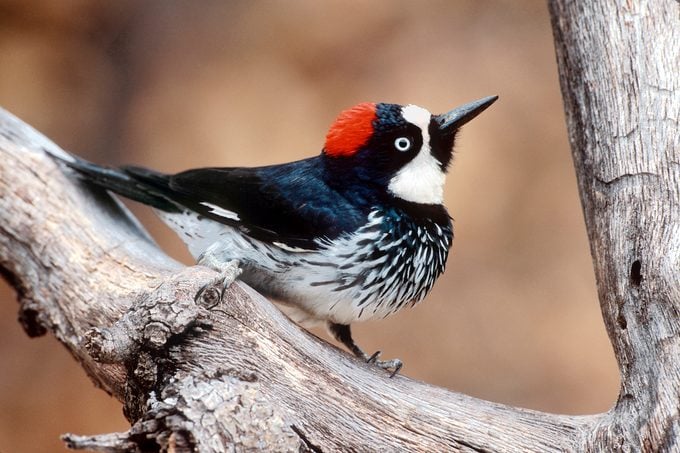
If you’ve watched a woodpecker hammer away at a tree, you may have wondered how it doesn’t get a headache. It bores its way into trees using its strong, powerful bird beak with a chisel-like tip, pecking slowly and deliberately. To be able to drill holes with that much force and not come away with a concussion, a woodpecker’s beak and skull has to act like the ultimate shock absorber. Its beak is covered in layers of keratin, a protein that helps the beak stand up to compressing forces, and its skull is thick and spongy, which absorbs the rest of the impact.
Designed to handle repeated hammering, woodpecker beaks can handle intense pressure. Between the bird’s beak and a skull shape that perfectly protects its brain, a woodpecker doesn’t have to worry about concussions while boring for food or creating a new home.
How do woodpeckers use their tongues?
Bird Beaks for Catching Insects
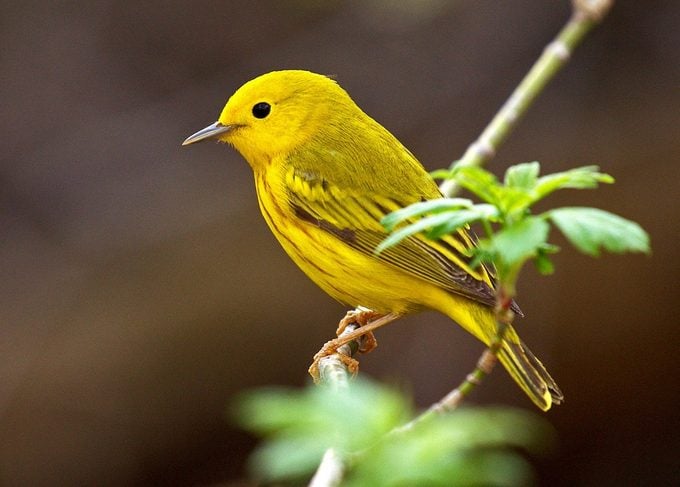
Many birds rely on insects as their primary food source, so their beaks complement their bug-hunting styles. Warblers, gnatcatchers and wrens have slender, tweezerlike bills fit for plucking unsuspecting insects off leaves and tree branches with precision.
Other species prefer hitting the bird equivalent of the drive-thru. Purple martins, nighthawks and flycatchers have wide, flattened beaks for catching insects in midair. Tree swallows, in particular, are known for their air acrobatics. If you want to invite the spectacle to your yard, set up a simple nest box in spring—the same kind as you would for a bluebird—then get ready to see their beaks in action.
Check out backyard birds that eat berries.
Bird Beaks for Sipping Nectar
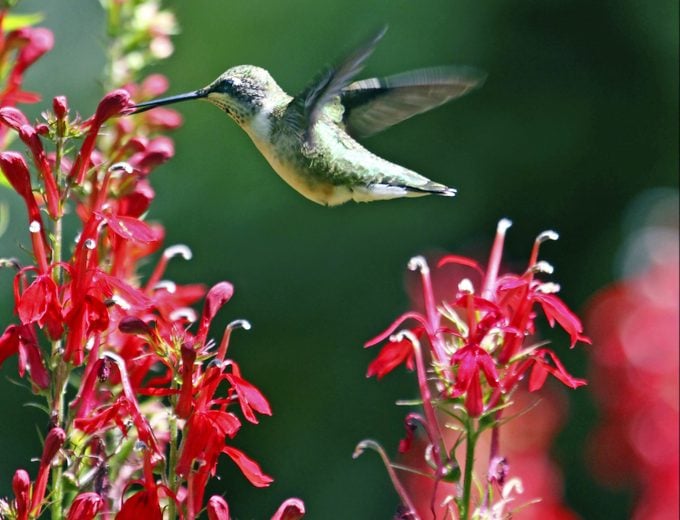
A hummingbird just wouldn’t be the same without its slender, tubular bill. These birds zip from feeder to feeder, slurping up sugar water with their tongues the way a butterfly does with its proboscis. Hummingbirds don’t have long bills simply to keep their equally long tongues contained, though. They also take full advantage of their unique beaks to catch insects such as fruit flies. A hummingbird’s bill is very thin and long, which makes an excellent bug-catching tool, because it can snap open and shut in less than a hundredth of a second.
How do hummingbirds use their tongues and beaks?
Bird Beaks for Ripping
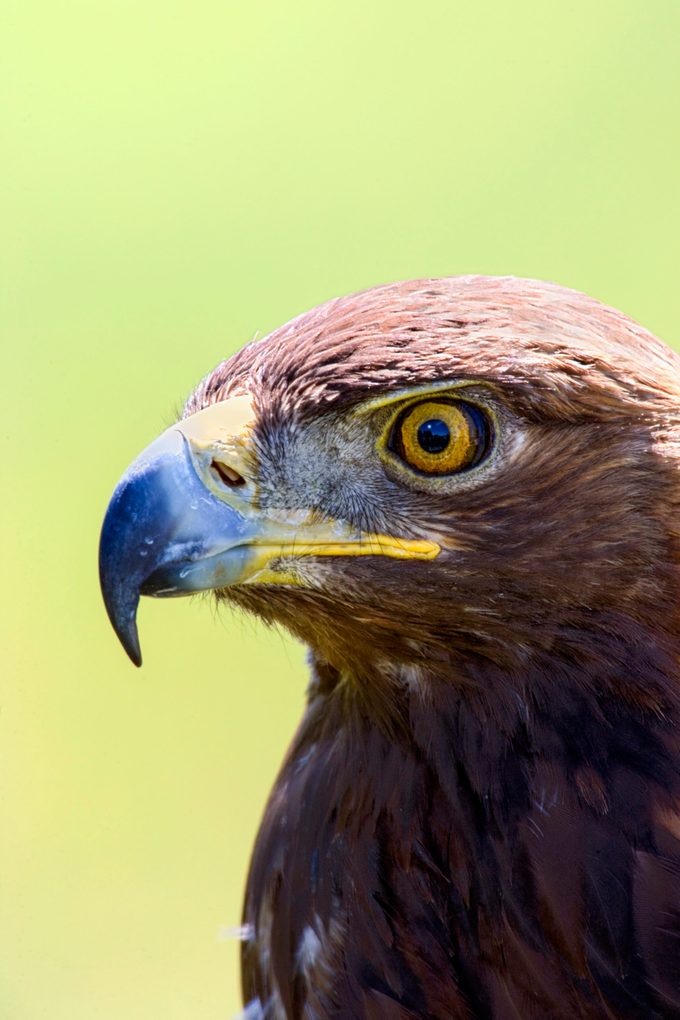
Large raptors, like red-tailed hawks, bald eagles and great horned owls, survive on prey they can’t necessarily swallow whole. These meat-eating birds, have sharp, hooked beaks that pierce, pluck and pull, allowing them to tear up their meals. Without this beak shape, raptors wouldn’t be able to tear their meat into bite-sized, manageable pieces.
It’s not just raptors that sport these intimidating beaks. Shrikes are predatory songbirds that have hooked beaks to help them feed on everything from lizards and insects to small birds and mammals. They’re known to kill more prey in one sitting than they can eat, and to store the leftovers for later. Vireos are mini predators, too. They use the curved hook at the end of their beaks to help them methodically hunt for caterpillars.
Bird Beaks for Cracking Seeds
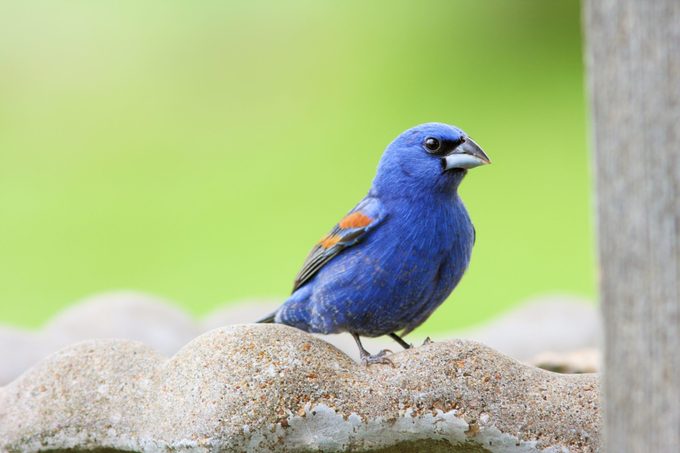
Fill your favorite backyard feeder with sunflower seeds and wait for birds with cone-shaped bills to swoop in for lunch. Bird enthusiasts know sunflower seeds are popular with a variety of backyard visitors. Birds like northern cardinals, rose-breasted grosbeaks, evening grosbeaks and purple finches have thick, short beaks designed for breaking open seeds with ease.
The next time a bird lands at your bird feeder, grab a handy pair of binoculars and watch closely. Birds that have cone-shaped beaks have the ability to trap a seed, thanks to a special groove in their beaks, and crack it open. Using their tongues, these birds then nimbly separate the seed from the shell. It expertly fits a seed snugly in a special groove between its upper and lower jaws. Then, crunch! The tough hull splits in two and the meat disappears into its mouth.
Not all birds of this beak type eat large seeds, though. The American goldfinch, for example, loves thistle, or Nyjer. Its small beak is perfect for tiny, tough thistle seeds. But no matter the size of the bird, from dark-eyed juncos to house finches, cone-shaped bills are some of the strongest around.
Grow sunflowers to attract more seed-eating birds.
Bird Beaks for Skimming
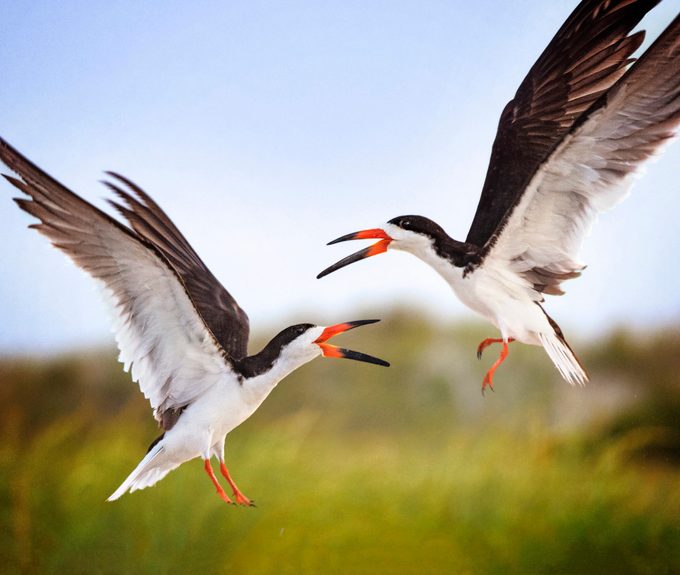
Look closely at a black skimmer and you may notice it seems to have an underbite. But that’s not a hindrance for these birds—in fact, it helps them catch their food in a very distinct way. They fly while dragging their lower mandibles through water, hoping to scoop up a fish.
Quiz: How many shorebirds can you identify?
What Are Bird Beaks Made of?
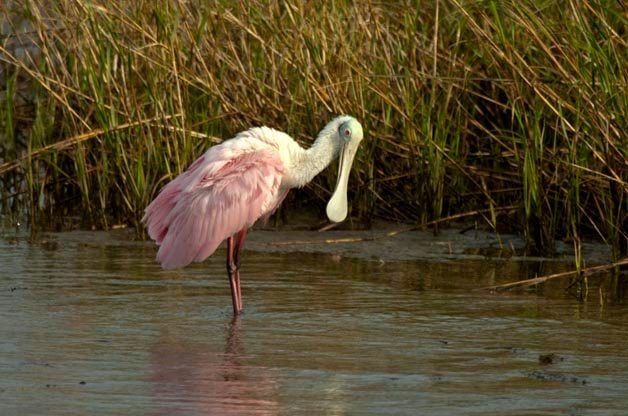
Your fingernails and a bird beak have something in common: They both consist of a protein called keratin. The keratin layer over bone gives beaks their glossy appearance. As the keratin wears down with use, a new layer forms, so the bird beak stays sharp and sleek.
Next, learn more about how bird feet work.




















